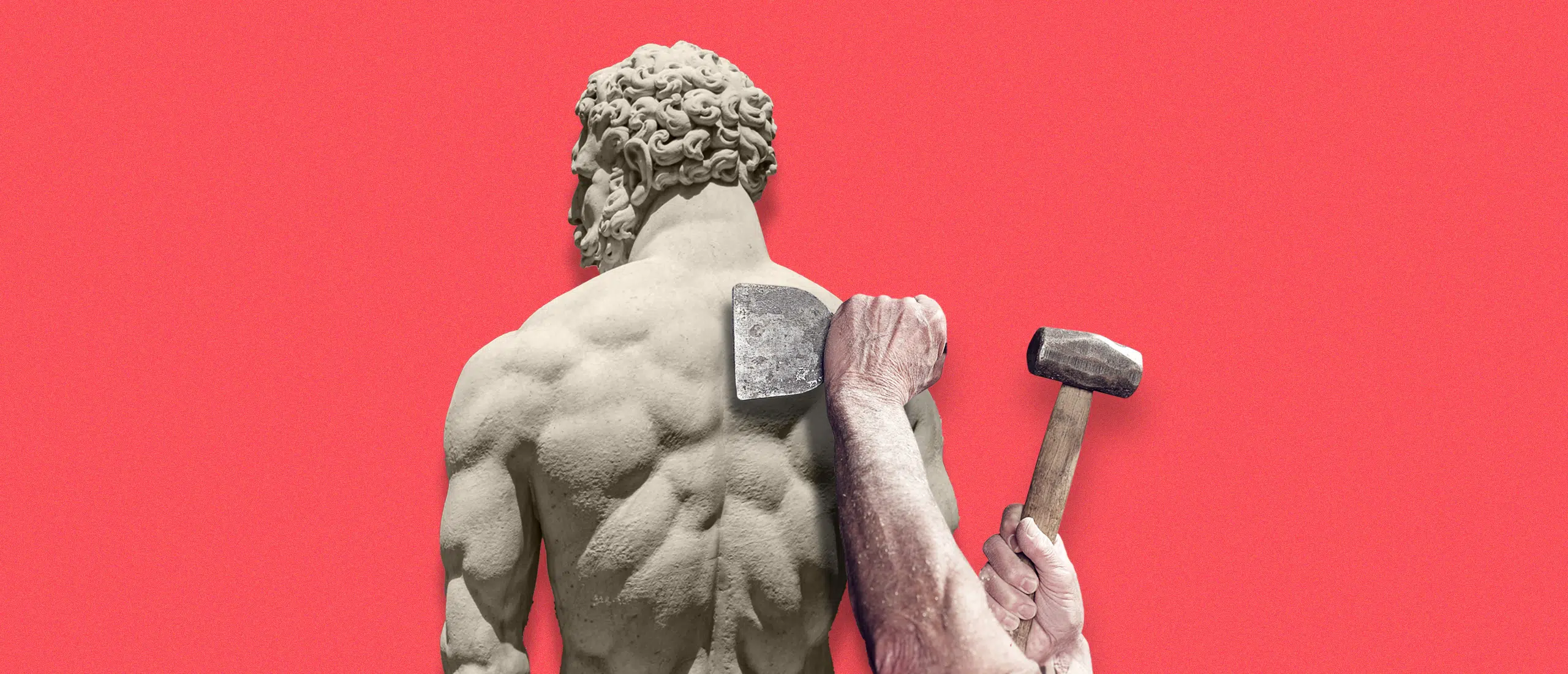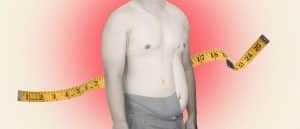How to Build Muscle and Lose Fat at the Same Time, According to a Personal Trainer
30-Second Takeaways
- Body recomposition is a training regimen that emphasizes losing fat and building muscle at the same time.
- To lose fat, prioritize a modest calorie deficit, prioritizing protein and nutrient-dense whole foods. And don’t skimp on cardio.
- To build muscle, prioritize strength training, and use supplements if needed to help you reach your protein needs and increase muscle growth.
As you’ve aged, you’ve likely noticed the challenge that keeping extra pounds off presents. Most middle-aged adults gain around one to two pounds per year (1). Packing on extra pounds is associated with an increased risk of cardiovascular disease, stroke, diabetes, and certain types of cancer (2). Thus, losing weight—or simply maintaining a healthy weight—might help you live longer.
The problem with weight loss, and there is one, is that if you only pay attention to the scale, you might be losing more than fat. Most fat loss comes at the cost of muscle mass (3). Muscle loss slows down your metabolism, and decreases your strength and functional ability to complete daily tasks with ease, so you want to keep it around.
“Your body composition, or fat to muscle ratio, is a much better indicator of overall health (4),” explains personal trainer Daniel McKenna, CPT. Improving your body composition is simple: Lose fat, build muscle. That’s where body recomposition comes in.
Body recomposition—a nutritional approach and training method that emphasizes losing fat and boosting muscle at the same time—can help increase calorie burn at rest, making fat loss all the easier (5). Here’s everything you need to know.
What Is Body Recomposition?
Body recomposition is the act of improving the ratio of fat to muscle in your body. “Traditional weight loss often focuses solely on cutting body fat and lowering your weight, while body recomposition involves lowering fat and building muscle,” says McKenna.
Since muscle weighs more than fat, body recomposition may not result in changes on the scale. Rather than using a regular scale, track your progress with a body composition scale, or ask a healthcare professional for testing options including using skinfold calipers, a DEXA scan, or hydrostatic (underwater) weighing to differentiate lean mass from fat mass.
How Does Body Recomposition Work?
Like other weight loss protocols, body recomposition typically relies on a caloric deficit to shed fat. To achieve a calorie deficit you can either eat fewer calories or exercise to burn more calories. To emphasize muscle growth, body recomposition also involves getting enough protein, and incorporating strength training into your routine.
Body recomposition is generally easier if you’re new (or returning) to training, overweight and have a high percentage of body fat, or taking anabolic steroids (6). Those who are well-trained can expect to see changes, too—albeit, more slowly and by making educated tweaks to their training regimen, calorie intake, and macros (split of proteins, fats, and carbs) over time.
How to Lose Fat
Losing fat is pretty straightforward: You have to be in a caloric deficit. But cutting too many calories makes it near impossible to preserve muscle, so the weight loss process during a body recomposition protocol is delicate.
Achieve a modest calorie deficit
A calorie deficit can be achieved in many ways, but they all come back to two basic methods: consuming fewer calories, expending more energy, or both (7). Since cutting too many calories makes it hard to preserve (let alone build) muscle, your best bet is a modest caloric deficit.
A slight deficit on non-training days, while breaking even on training days will give your muscles the fuel they need to grow, personal trainer and nutrition coach James King III, CSCS, PN-1 previously told The Edge. Aim to get at least two to three days of cardio per week, per McKenna. Cardio is essential for overall health, and can help you achieve a caloric deficit without having to cut food from your plate.
Limit processed foods
“Food quality matters,” says McKenna. “Processed foods usually have more calories, as well as additives and preservatives.” High intake of ultra-processed foods, has been linked to weight gain (8). Another reason to keep your paws off the candy, fast food, chips, and pastries.
Focus on nutrient-dense whole foods
Colorful fruits and vegetables are chock full of vitamins, minerals, and antioxidants that can help with muscle recovery. Lean protein like chicken, omega-3-rich fatty fish like salmon, along with legumes, nuts, and seeds are packed with protein, which will help preserve muscle. And complex carbs like whole grains will give you the energy you need to get through your workouts.
How to Gain Muscle
While losing fat is important, maintaining or gaining muscle is key to changing your body composition. Muscle is the secret sauce for a faster metabolism—which will help you hold onto your body composition for the long haul.
Eat enough protein
Protein is essential for maintaining and building muscle. How much do you need? One review concluded that 0.73 to one gram of protein per pound of body weight is best for maximizing muscle mass and strength gains (9). But research from the International Society of Sports Nutrition suggests that even higher protein intakes—around 1.1 to 1.4 grams per pound per day—might be ideal for maintaining muscle mass in people who strength train while in caloric deficit (10). “Start with at least one gram of protein per pound of bodyweight and tweak as needed,” says McKenna.
Strength train
To build muscle, you have to lift heavy. “Compound exercises like squats, deadlifts, chest press, or hip thrusts will typically make a bigger impact on body composition,” says McKenna. Compound exercises—exercises that involve a variety of muscle groups—burn more calories, allow you to lift more weight, and ultimately, build more muscle.
“Aim to lift weights three to four times per week,” says McKenna. He suggests beginners choose four compound exercises, and hit three sets of eight to twelve reps of each exercise. For example:
- 3×8 Goblet Squats
- 3×8 Trap Bar Deadlift
- 3×8 Dumbbell Chest Press
- 3×8 Barbell Bent Over Rows
As you progress, you can increase the overall volume (sets and reps), load (weight lifted), or exercise complexity to continue building muscle.
Consider supplementation
Body composition isn’t easy, and supplements can help. Protein powder is a solid bet if you’re struggling to hit your protein load. McKenna also swears by creatine for boosting muscle recovery and growth. Studies show creatine can increase gains, work capacity, recovery, and even brain health (11). BPN Creatine is McKenna’s personal favorite.
About the Expert: Daniel McKenna is a celebrity fitness trainer, founder of the Irish Yank Society, and creator of the Irish Yank Fitness App. With nearly a decade of experience, the Irish Gaelic football athlete turned celebrity trainer is on a mission to help as many people as possible find joy in daily movement. His unique approach to fitness combines foundational training techniques with positive reinforcement to help clients see and feel noticeable changes.
References
-
Huftless, S. et al . (2013). Strategies to Prevent Weight Gain Among Adults.
-
Zheng, Y. et al. (2017). Associations of Weight Gain From Early to Middle Adulthood With Major Health Outcomes Later in Life.
-
McCarthy, D. et al. (2021). Weight Loss Strategies and the Risk of Skeletal Muscle Mass Loss.
-
Holmes, C. et al. (2021). The Utility of Body Composition Assessment in Nutrition and Clinical Practice: An Overview of Current Methodology.
-
Marcus, J. et al. (2013). Weight Management: Finding a Healthy Balance.
-
Barakat, C et al. (2020). Body Recomposition: Can Trained Individuals Build Muscle and Lose Fat at the Same Time?
-
Osilla, E. et al. (2022). Calories.
-
Hall, K. et al. (2019). Ultra-Processed Diets Cause Excess Calorie Intake and Weight Gain: An Impatient Randomized Controlled Trial of Ad Libitum Food Intake.
-
Schoenfeld, B.e t al. (2018). How Much Protein Can the Body Use in a Single Meal for Muscle-Building? Implications for Daily Protein Distribution.
-
Jager, R. et al. (2017). International Society of Sports Nutrition Position Stand: Protein and Exercise.
-
Wu, S. et al. (2022). Creatine Supplementation for Muscle Growth: A Scoping Review of Randomized Clinical Trials from 2012 to 2021.














